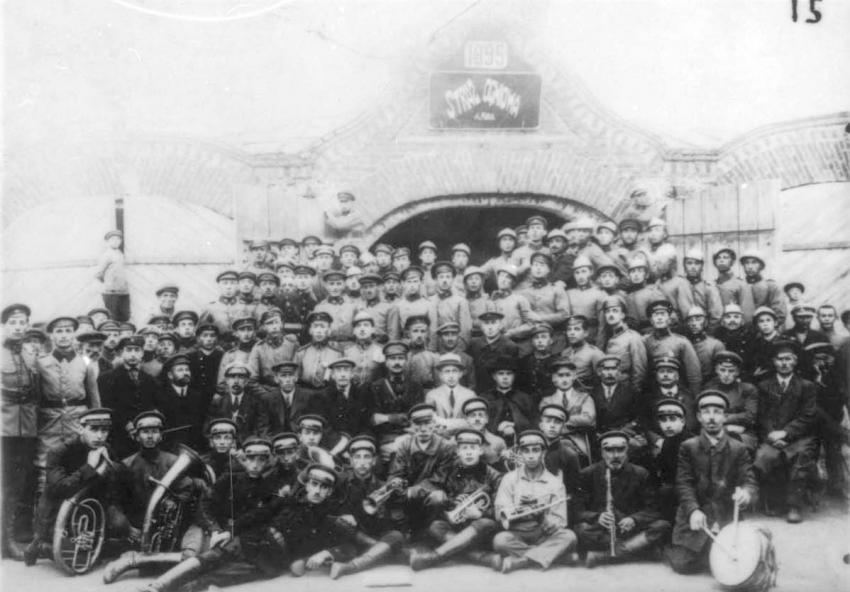The Library
By the end of the 19th century, a group of "Lomed Veoved" (Learn and Work) youth, ex-yeshiva students and Jewish teachers, established a Hebrew, Yiddish and Russian library in Mir, to represent its educational culture. The Russian authorities were not keen on giving them a license to open a Jewish library, so it was opened as a book trading store. With the outbreak of WWI, the books were taken to Minsk for safeguarding. When the war ended, they were returned to Mir and the library was reopened. Most of the Yiddish and Hebrew publications came from Warsaw, Vilna and the US. The library was a huge draw and refuge for youth that were seeking new ideas.
Chanoch Rakowitz, born in Mir, relates:
"I brought home Ahavat Tzion (The Love of Zion) by Mapu to read. My 70-year-old grandfather saw that I was hooked on the book. He looked at it, took it from me and "swallowed" it in just a few nights… there was no other library like it in the surroundings, in Nowogródek or in Lida."
Chanoch Rakowitz, "Mir for its Genius and its Honor," Mir, p. 159
In the interwar period, the library held over 5,000 titles, a remarkable number in comparison to the size of the Mir community – as well as to its far-flung location in Poland. The library operated until the Nazi occupation in 1941.
The Drama Circle
Between 1908 and1910 a drama group operated in Mir, which produced Jewish plays including "Shulamit" and "Bar Kochva." After WWI, the group renewed its activities, attracting graduates of the Jewish school. The revenue earned from its shows in Mir and neighboring towns went towards supporting the Jewish library and school. Moshe Reuveni remembers the drama circle:
"We didn't want just to make money for the library, we also had another goal – to provide the Jewish public in the town… with a good play, not substandard ones, like they had in most towns in those days. We reached our peak with "The Miser," by Molière. The production was perfect and the hall packed to the rafters, just like the good old days."
Moshe Reuveni (Rostovski), "The Library," Mir, pp. 230-231

